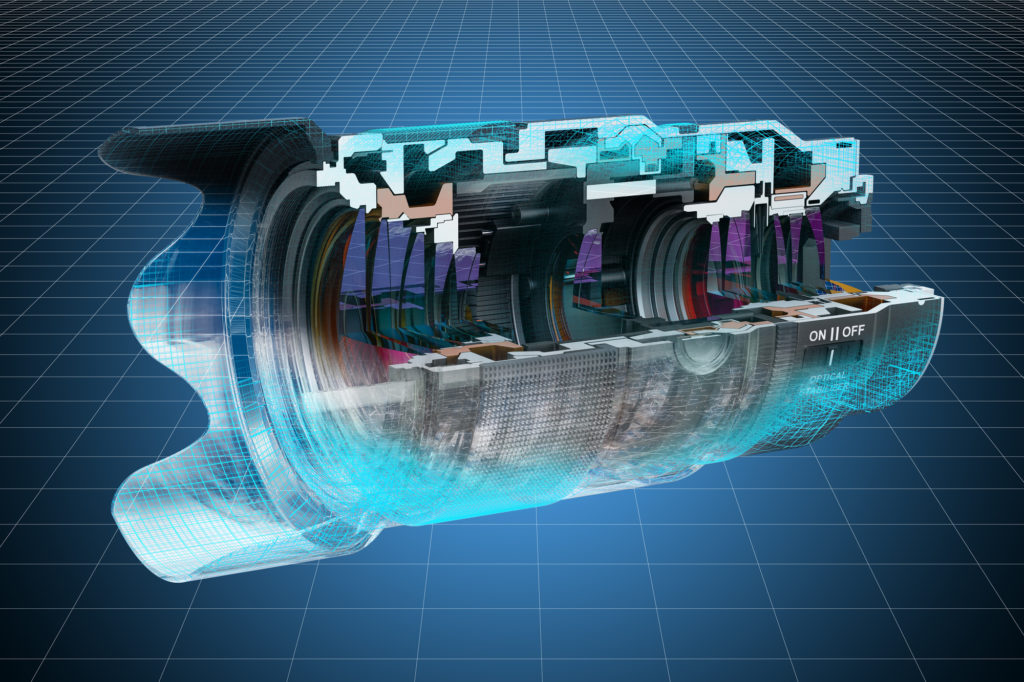
Opportunities in Additive Manufacturing Software Markets 2020
$2,497.50 – $3,497.50
| Select User License | Single User License (one computer), Group User License (Up To Five Computers), Enterprise User License (Unlimited Computers Within Your Organization) |
|---|
Request Excerpt
Opportunities in AM Software 2020 Table of Contents
Chapter One: Defining the AM Software Chain in 2020
1.1 Segmentation of Additive Software Elements in 2020
1.2 Fundamental AM Software Market Structure and Technology Changes
1.2.1 Print Preparation Tool Functionality Moving Down Market Through Integrations in MES and Simulation Packages
1.2.2 Major Software Industry Trends – Leveraging GPU Computing Power, Going Direct CAD-to-Print
1.3 Additive Software Markets in Healthcare vs. Industrial Markets
1.4 Summary Outlook for AM Software Tools and Opportunities
Chapter Two: Design Software for Additive Manufacturing – Generative Design and Topology Optimization
2.1 Significant Uptake of Design for Additive Manufacturing Software Tools and Tool Integrations
2.1.1 Creating “Additively Intelligent” Design Environments
2.1.2 Pushback on Design for Additive Requirements – a Threat to Existing Software Development Efforts?
2.2 Types of AM Design Optimization Software – Lattice Generation and Topology Optimization
2.2.1 AM-Oriented Topology Optimization Tools in Major CADCAM Platforms
2.2.2 Notable Standalone Additive Generative Design Software Tools
2.2.3 Other Companies Approaching Additive Generative Design and Topology Optimization
2.3 Quantifying Opportunities Associated with AM Design Optimization Tools in Generative Design and Topology Optimization
Chapter Three: Additive Manufacturing Execution and Production Management Software Tools
3.1 Evolving End-user Requirements Drive Need for AMES Software
3.2 Additive MES Segment Blending into ERP and PLM
3.2.1 Unique Challenges of AM Driving AMES Software Functionality Expansions into PLM, ERP
3.3 AMES Providers and Software Tool Landscape
3.3.1 A Crowded Field with Nuanced Offerings
3.3.1.1 Materialise Streamics
3.3.1.2 3YOURMIND Agile Manufacturing Software Suite
3.3.1.3 Link3D Additive MES Software
3.3.1.4 AMFG
3.3.1.5 Bright-AM by Bluestreak
3.4 Quantifying Opportunities in Additive MES Software Markets
Chapter Four: Additive Manufacturing Process Simulation and Monitoring Software Tools
4.1 Manufacturing Applications Driving Market Need for Process Simulation, Monitoring
4.2 Additive Process Simulation Opportunities Across the AM Workflow
4.2.1 AM Process Simulation Opportunities – Into All AM Processes for the Future
4.3 Current Commercially Relevant Additive Process Simulation Tools and Providers
4.3.1 Relevant AM Process Simulation Tools as Standalone Tools
4.3.1.1 MSC Simufact Additive/Digimat AM
4.3.1.2 Ansys Additive Print/Additive Suite
4.3.1.3 AdditiveWorks Amphyon
4.3.1.4 Flow-3D AM
4.3.1.5 Genoa 3DP
4.3.2 Simulation Capabilities in Print Prep Tools
4.3.2.1 Netfabb Simulation
4.3.2.2 Materialise Magics Simulation
4.3.2.3 3DXpert
4.3.3 Simulation Packages in Broader Software Platforms
4.3.3.1 Siemens NX/Simcenter 3D
4.3.3.2 Dassault Systemes Print to Perform
4.4 Current Efforts in Additive Process Monitoring Tools
4.5 Quantifying Opportunities for AM Simulation, Market Opportunities, and Forecasts
About SmarTech Analysis
About the Analyst
Acronyms and Abbreviations Used In this Report
List of Exhibits
Exhibit 1-1: Convergence of Design and Workflow Software for 3D Printing
Exhibit 1-2: Total AM Software Market Size ($USM) by Segment, Healthcare Markets vs. Industrial, all Tool Types, 2019-2029
Exhibit 1-3: Total Global AM Software Revenue Opportunity, all Software Types, 2015-2027(f)
Exhibit 2-1: Illustration of Additively Intelligent Design Environments
Exhibit 2-2: Visualization of Contrasting Design Theory Based on Topology Optimization
Exhibit 2-3: Visualization of Lattice Based Topology Optimization
Exhibit 2-4: Comparison of Key Strengths and Weaknesses to Current Types of Lattice Based Topology Optimization Software
Exhibit 4-1: Metal Additive Manufacturing Global Part Production by Functional Role, all Metal AM Technologies 2018-2029*
Exhibit 4-2: The AM Quality Assurance Continuum
2020 will be a landmark year in history for a number of reasons, and for the additive manufacturing industry. The COVID-19 global pandemic has thrown nearly every industry, institution, and facet of life—hopefully briefly—into a period of uncertainty. Economically speaking, manufacturing is likely to experience shockwaves from the supply chain interruptions and government restrictions placed on people and businesses for several years. The additive manufacturing industry, however, has risen to the challenge of manufacturing in the midst of the crisis, putting additive technologies as a whole back once again into the spotlight of the technology world.
Additive manufacturing software solutions will play a pivotal role in realizing and expanding the vision for AM. While this has always been true, even before 2020, over the past three years the software market for additive manufacturing has evolved to the point that it is now actively improving the outcomes for many users by achieving connectivity and cohesion of solution in both design for additive manufacturing and execution.
Just three years ago, the majority of AM software opportunities were associated with data preparation software packages, which have been the longstanding flagship tools of the AM software industry, such as Materialise Magics and Autodesk Netfabb. Machine processing software sold by third parties, again dominated by Materialise, also were top in terms of overall revenue generation. Today, the opportunities have shifted dramatically to design optimization, simulation, and manufacturing execution software, primarily driven by continued interest in shifting additive manufacturing technologies into production applications.
This report, the first to look at the burgeoning additive software market since SmarTech Analysis published the world’s first deep dive market study on the topic in 2017, seeks to re-evaluate the current and future opportunities for AM in the new era of additive software. With the largest names in CADCAM, CAE, and PLM software tools now building out additive capabilities directly into the platforms which are already embedded into the fabric of manufacturing, the future for AM software appears bright even as markets for hardware and print services have suffered in the past twelve months.
This report includes a market data and forecast database which presents opportunity sizing data for the AM software market. This written portion discusses trends and gives context to the data provided by analyzing and describing the industry structure and trends.
|
1.1 |
Total Global AM Software Revenue by Software Type |
|
1.2 |
Total Global AM Software Revenue by Software type Excluding Machine Processor Software |
|
1.3 |
Total Global AM Software Revenue by Industry, all Software Types |
|
1.4 |
Total Global AM Software Revenue by Industry, excluding Machine Processor Software |
|
1.5 |
Polymer-specific Additive Manufacturing Software Revenues |
|
1.5a |
Metal-specific Additive Manufacturing Software Revenues |
|
1.6 |
Global Additive Design Optimization Software Opportunities by Market |
|
1.7 |
Additive MES/Production Management Software Opportunities by Market |
|
1.8 |
Application Specific AM Software Tools Opportunities by Market |
|
1.9 |
AM Process Simulation Software Opportunities by Market |
|
1.1 |
Total Annual Metal Additively Produced Parts by Functional Purpose, All industries |
|
1.11 |
Total AM Software Revenues by User Group |
|
1.12 |
Comparison of Current AM Software Forecast versus Prior Expectations |

